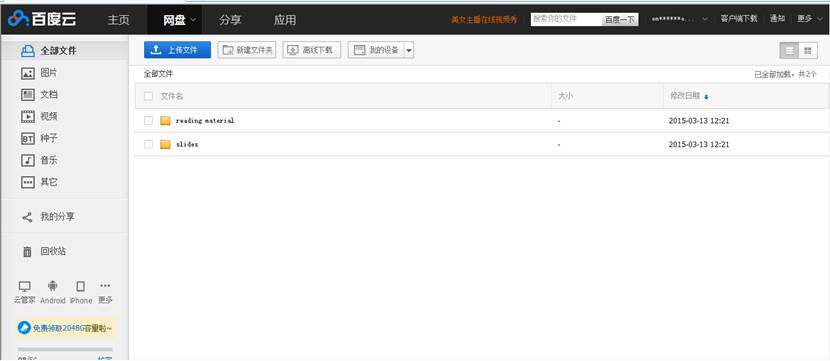![]() 1-Syllabus2015_China's Reform and Opening-up_ZhangYan.pdf
1-Syllabus2015_China's Reform and Opening-up_ZhangYan.pdf
China’s Reform and Opening-up
Course Code: EMAE630005Number of Credits: 2
I. Instructor Information
Name: Yan Zhang, Associate Professor
China Center for Economic Studies
School of Economics, Fudan University
Shanghai, 200433 China
Lecture Time: Monday, 13:30-16:10 (Week 1-11, March 9th-May 18th)
Lecture Location: 6304
Office Hours: Wednesday, 15:00-16:00
Office Number: Room 704, School of Economics, Fanhai Building
Email: yanzhang_fd@fudan.edu.cn
TA: Jenny (Yiting) GONG
Email: 11307100214@fudan.edu.cn
Important Notice:
No Class on March 23rd(Week 3) and April 6th(Week 5)
Deadline for Group Presentation Information: March 30th(Week 4)
for Group Presentation PowerPoint Slide and Review: 3 days after pre.
Deadline for Response Paper: April 27th(Week 8)
Deadline for Final Paper: May 25th (Week 12)
II.Course Description
China’ s post-Maoist economy has gained rapid growth since 1978 when it embarked on economic reforms and opening up policies initiated by Mr. Deng Xiao-ping. As a major participant in the world economy due to its size, dynamic growth, and continuing reform policies, China’s economic future is important to investors, households, and governments. This course tries to give some explanations to so-called China's Miracle, and more importantly, to discuss current top issues and directions of future opening-up and reform.
What are the incentive effects on workers, firms, and local governments of China's opening-up and economic reforms since 1978? What are their negative effects? Will they work in the near future?
What are the economic, social, and political foundations of China’s miracle? How will they influence China’s next reforms?
Will China avoid the middle-income trap? How will globalization influence China’s reforms? What are the most important reforms in the next 5 to 10 years?
Course Content:
This course contains three parts. The first part outlines the economic, political and social foundations for China's miracle. The second part turn to special issues on Chinese economy, comparing them with developed economies, discussing their origins and difficulties, and reviewing top solutions. To conclude, the last part discusses some feasible strategies for China at a crossroad. While evaluating China's future reform and opening-up strategies, it will also conclude the economic progresses as well as the big challenges to China's sustainable developments in a broader view.
III.Course Objectives
Students should understand the political and economic logic of China’s reform and opening-up since 1978. Ongoing reforms should also be known. Students should be familiar with at least 2 areas in China’s reform agenda.
IV.Course Materials
There is no required textbook. Reading materials are selected from top economics journals. Reading lists could be downloaded from EMA website: http://www.econ.fudan.edu.cn/ema/index.php. Readings and lecture slides for 2015 spring are stored in “pan.baidu.com” with account ID emacourse@163.com and password chineseeconomy. Revised password will be announced at class.
Access to the Online Storage includes Two Steps as follows:
Step 1: Entering“ pan.baidu.com ” in the address bar, and you will see the following the hint on the right.
second blank


first blank



Step 2:Fill in the first blank with ID “emacourse@163.com”, the second blank with Password “chineseeconomy”, then click the
 botton, and you will see
botton, and you will see
There are temporarily two files, namely File “slides” and “reading material”.
Instructor’s slides in class will be updated in the File “slides”, and relevant articles will be updated in the File “reading material”.
Recommended References:
Lu, Ming, Zhao Chen, Yongqin Wang, Yan Zhang, Yuan Zhang, and Changyuan Luo, China’s Economic Development: Institutions, Growth and Imbalances. Edward Elgar Publishing Limited, 2013.
V.Course Delivery
Reading:
Students are required to read weekly one of the assigned articles. All the readings are in English.
Response Paper:
Students are required to write a five-page, single-spaced response paper on their opinions about Chinese economy for the assigned papers (due on the 8th week, April 27th). Suggested hot topics include (but not limit to) leftover children, local election, SOE monopoly, local debts, private lending, China and the world, FDI in China, and etc.
Group Presentation:
Students are required to assemble groups to present assigned readings using slides. Each group is free to choose one paper with asterisks (***) to present among the papers on the reading list. Each group would include around 4 students. Cooperation and division among group members are encouraged. The records would be given based on their relative performance during the 30-minute presentation. Students are also required to well prepare to comment and raise questions in the seminar session of this course.
Group and paper information should be sent to TA before the 4th week, March 30th. If two or more groups choose the same paper, the early bird gets it. Presentation arrangement will be announced at class on the 4th week.
Each group should also submit the PowerPoint slides and one-page review of the paper and presentation in the next 3 days.
Final Paper:
There will be a course paper in the end of the course. It should be an academic paper with flexible topics and specific questions. Although the minimum requirements are still five-page, single-spaced, most former students have submitted longer papers.Final paper is due on the 12th week, May 25th.
Notes on Readings and Presentation:
There is no formal prerequisite for this course, and there are no technical tools used in the instruction of this course, while microeconomics would help to understand this course better.
It might be too heavy for you to read all assigned papers. And it is also too heavy to know all the details, especially the econometric methods. The point is, the idea of the papers and the main findings. It is designed for you to
Choose one of the papers to read each week;
Just pay attention to key events that have changed China, and their influence to China’s development and future reforms;
Do not involve yourself in mathematic details. Try to understand their outcomes, findings, and implications for China’s sustainable growth.
For historical reform details, it is up to your interest, while certainly more understanding of such details would help you to understand China's reforms better.
VI.Assessment
Students enrolled in this course should take part in the class, discuss problems with group members and teachers, and finish one presentation, one response paper and one final paper.
Grades will be determined on the following policy:
A = 90-100 pointsA- = 85-89 pointsB+ = 82-84 points
B = 78-81 pointsB- = 75-77 pointsC+ = 72-74 points
C = 68-71 pointsC- = 64-67 pointsD = 60-63 points
F = below 60 points
Discussion:15%
Group Presentation:20%
Response Paper:15%
Final Paper:50%
VII.Course Schedule
Part I. China’s Miracle: The Economic, Political and Social foundations
Week 1 (03/09): Introduction: Chinese Economy and Reform Strategies
Week 2 (03/16): Growth Driving Forces: Decentralization and Political Incentives
(No class on March 23rd, Week 3)
Part II. Challenges for China's Economic Reform and Opening-up: Special Issues
Week 4 (03/30): C1--Local Debts, Land Finance, and Central-Local Relationship
(No class on April 6th, Week 5)
Week 6 (04/13): C2—Urbanization, Industrialization, and Investment Driving Force
Week 7 (04/20): C3—Private Enterprises, Financial Constraints, and Marketization (Privatization)
Week 8 (04/27): C4--Regional Partition, Urban-rural Partition, and Inequality in China (Response paper due on this week)
Part III. Feasible Systems and Feasible Strategies for China's Sustainable Developments: Economic Reform and Opening-up in the Next Decade
Week 9 (05/04): Reconstruct the Central-local Relationship: Economic and Political Bases
Week 10 (05/11): Market, Government, and Public Services Provision in China
Week 11 (05/18): China and the World: Opening-door Policies and Globalization
Week 12 (05/25): Final Paper due on this Week
|
中国的改革与开放/China’s Reform and Opening-up版权所有 |
